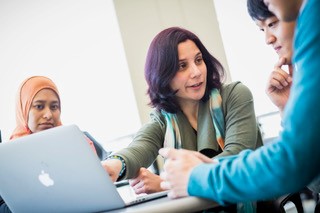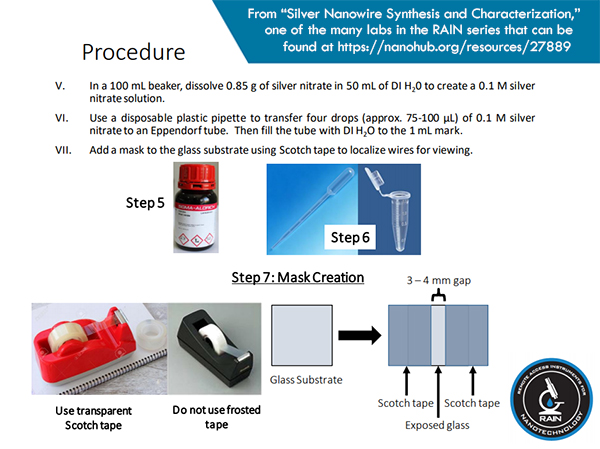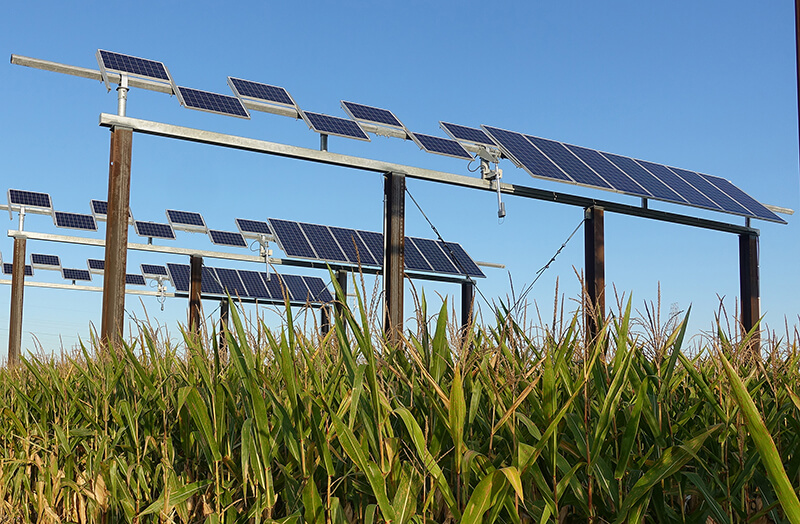|
Issue 39
nanoHUB Scheduled Downtime
Please note that nanoHUB will be down on Monday, December 16 beginning at 7:00 am EST (1:00 pm UTC) for a scheduled migration to new equipment. Expected duration of the outage is up to 12 hours. All open tool sessions will be terminated. Please plan accordingly. We apologize for any inconvenience.
Meet the New Director of the nanoMFG Node
nanoHUB had an opportunity to speak with Dr. Elif Ertekin, the new Director of nanoMFG, the NSF-funded nanomanufacturing node of the Network for Computational Nanotechnology. Dr. Ertekin succeeds Dr. Kimani Toussaint who had been the node's director since its beginning in 2017.
We thank Dr. Toussaint for all of his hard work and wish him the best at his new position with the School of Engineering at Brown University!
Q: Dr. Ertekin, what is your background? What is your primary research area?
A: I have a mixed background in engineering science and mechanics, applied math, and materials science and engineering. My primary research area is in computational materials science, and my research is centered on developing and applying modeling and simulation to describe materials at different length and time scales across a couple of different application areas such as energy conversion materials, structural materials, and others. In all cases, we try to link the structure of the material – from the atomic to micro scale – to its resulting properties and behavior.
Q: Can you give us a brief overview of the field of nanomanufacturing?
A: Nanomanufacturing is an exciting, emerging field that is centered on scalable production of any type of device or material that includes components with nanoscale feature sizes. These nanoscale components could be anything – powders that contain nanoparticles with carefully controlled size distributions, nanoelectronics that incorporate layered two-dimensional materials or nanotubes and nanowires, and other nanopatterned architectures. Many of the issues that need to be addressed in traditional manufacturing, such as scale up, quality control, process flow, and uncertainty quantification become more complex when working at the nanoscale. Our node is focused on helping the community to overcome some key challenges to help push the field forward.
[Read more...] Have You Ever Seen the RAIN?Remotely Accessible Instruments in Nanotechnology (RAIN) is a community of educators that aims to bring advanced technologies into K-12 and college classrooms via remote access. RAIN's mission is to facilitate the study of nanoscale science by lowering barriers for instructors to deliver relevant educational activities for younger students interested in learning about nanotechnology across traditional STEM fields. Additionally, RAIN engages the next generation STEM workforce with a connection to experts, tools and institutions where cutting-edge research is being performed. This resource is particularly vital for underrepresented and minority students, especially those attending institutions that cannot provide on-site access to advanced technologies. Currently, the RAIN network consists of nineteen sites across the United States and offers its services free of charge to make STEM education more accessible to the students that would otherwise not encounter these resources. Data shows that RAIN is effective at fostering a passion for the sciences when used in K-12 through college curricula. RAIN has prepared a series of labs that can be utilized to increase the effectiveness of your remote experience.
The RAIN labs can be accessed through nanoHUB. They include basic science labs using chemical reactions to measure percent oxygen in air, determining an unknown mineral and studying the effects nanoparticles have on mung beans. There are also nano-based labs available synthesizing various nanoparticles and constructing a nano-based solar cell. The RAIN Network can be accessed at http://www.nano4me.org/remoteaccess.

Photovoltaic Designs Can Generate Electricity Alongside Crops
According to a recent press release, professors Rakesh Agrawal, Peter Bermel, and their graduate students recently published a paper in the October issue of Nature Sustainability on incorporating photovoltaics into working agricultural farms. The paper was featured on the journal's cover and concerns the collection of solar energy for electricity on farmland.
This work formed the basis of the the Agrivoltaic Simulation tool, developed by Hans Torsina, an NCN URE 2019 participant, and others. The tool simulates agrivoltaic systems based on photovoltaic system geometries to form shadow maps, power, and irradiance data.
Upcoming Events
Future Materials 2020
Materials Science and Nanotechnology Conference
When:
February 26-28, 2020
Where: Lisbon, Portugal
This conference will share the latest research amongst professionals from industry and education, as well as provide a platform for students from research areas of materials science, nanotechnology, chemistry and physics to share their ideas and experiences and indulge in interactive discussions and technical sessions at the event. Future Materials 2020 is comprised of various sessions designed to offer comprehensive symposiums that address current issues in the field of Materials Science and provide a fantastic opportunity to network with your peers. The conference also provides an opportunity to meet Prof Ada E. Yonath (Nobel Laureate 2009).
Website: Future Materials 2020 website
ICANM2020: 8th International Conference & Exhibition on Advanced & Nano Materials
When:
August 24-26, 2020
Where: Ottawa, Canada
The 8th International Conference & Exhibition on Advanced & Nano Materials (ICANM2020) will take place from August 24 to 26 in Ottawa, Canada. This conference offers the unique opportunity to share your research work and refresh your knowledge. It also provides an excellent platform to meet existing colleagues and to greet new delegates.
This highly interactive conference and exposition is designed to promote information exchange among scientists, technologists, engineers, entrepreneurs, and exhibitors involved in materials science, specifically in the area of Advanced and Nano materials.
Website: ICANM 2020 conference

New Resources
The use of non-traditional sources of water (e.g., seawater and wastewater) is essential to supporting human life on earth. While seawater desalination will remain an indispensable technology, its large energy demand necessitates the development of complementary wastewater treatment strategies. Fit-for-purpose water, one envisioned opportunity, utilizes distributed treatment systems to provide water for localized reuse at the potable or non-potable quality demanded by its intended application. Membranes fabricated from self-assembled block polymers provide a versatile platform that can help address the technical hurdles associated with this emerging paradigm. In this presentation, we will discuss how to produce block polymers membranes that contain a high density of well-defined nanoscale pores using facile and scalable techniques. Furthermore, we will describe how the performance profile of the membranes can be tailored to effect selective separations through affinity-based adsorption, electrostatic interactions, and catalytic conversion of target solutes.
The Jupyter Notebooks in this tool implement methods developed by Citrine Informatics for materials design. Users can modify the notebooks to explore different models, try new ideas and adapt them for their own problems.
Accurate knowledge of ionic structure & dynamics is critical to study nanoparticle dynamics. Nanoparticles are polarized in most solvents. Simulating the dynamics of ions near polarizable nanoparticles is challenging: Need to solve Poisson equation at every timestep. Accurate knowledge of effective charge of nanoparticles (NPs) and ionic structure near NPs is useful in the design of engineered nanocontainers for biological applications. This information also enables the understanding of nanoscale phenomena such as protein conformational changes, DNA precipitation, NP self-assembly, stability of emulsions, and charging/discharging processes in supercapacitor systems. This presentation will walk the viewer through how this application addresses these important issues.
This app demonstrates how simple "rules" for three types of agents (biorobots) and two substrates (signals). In this simulation, "worker bots" (red) seek out "cargo" (blue), form focal adhesions, and haul the cargo towards "director agents" (green) where the cargo is released.
This model and cloud-hosted demo are part of a course on computational multicellular systems biology created and taught by Dr. Paul Macklin in the Department of Intelligent Systems Engineering at Indiana University. It is also part of the education and outreach for the IU Engineered nanoBIO Node and the NCI-funded cancer systems biology grant U01CA232137.
|






